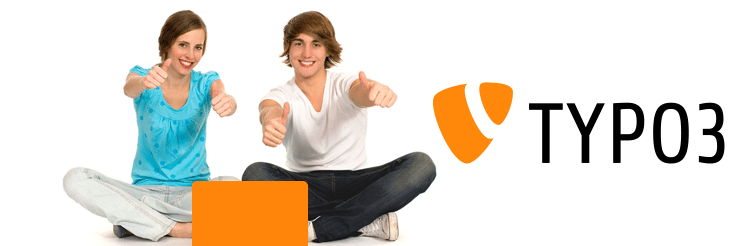From an editor’s perspective, here’s why I think TYPO3 is the best CMS.
Simple Content Editing
Adding text, images or multimedia is super easy with TYPO3 once the templates have been setup and it is ready for content.
The text editor has all the options you need to format your text, and is similar to what you would find in a text processing software like Word or email, and that familiarity means there is no need to figure out what each icon means. Other CMS tend to redesign their text editor icons, and often change them with their updates.
The TYPO3 text editor format controls as compared with Word and WordPress
Word

TYPO3

WordPress

There is also a wide range of options for formatting your images, like changing sizes, position, and adding borders. No need to get into the code or change your styles to get that image right where you want it. Another bonus is being able to add alternative text, captions and titles for your images as well, all in the same screen.
You also have the option to upload media directly into your TYPO3 site, or embed your content from other websites (like YouTube or Google Maps), simply by creating an HTML element and pasting your piece of code.
Simple File Management
Managing files with TYPO3 is very similar to how you would organize your files on your own computer. Through the Filelist module, you can create folders for each type of file, or for different sections of your site, and then upload your files onto those folders.
With this system it is easy to find your images, PDFs or documents when editing your website’s content, removing the hassle of having (or not having) FTP access to your site to manage your files. Linking to those files is also made easy by the TYPO3 link browser, so there is no need to manually search for your file’s link.

Compare this to other CMS where there is only one file upload location. You can choose to sort your files by upload date, however this is not a useful feature if you don’t have FTP access to your website. File management can get chaotic as you keep updating and adding more files to your website over time.
Friendly Interface For All User Levels
The backend of TYPO3 is scalable to control what different users have access to. For example, a content editor might only find the need to access the pages, the filelist module, and being able to edit content on the pages. Editors from different departments can be restricted to editing only certain parts of the website.
For a more advanced user, they might also want to have access to templates and typoscript editing to add or modify functionality for the available extensions.
There’s An Extension For That
Contact forms, calendars, blogs and many other extra functions can be added to your website by installing extensions. There are over a thousand extensions available for TYPO3, for free! And if you ever need support, you will find that the TYPO3 community takes their documentation very seriously, and your solution is most likely one Google search away.
Camila is the Website Maintenance expert here at SeeThrough Web and has been editing TYPO3 websites since 2010. You can follow her on Twitter.
Find more resources about TYPO3 in our support page or contact us if you need help with your TYPO3 website.

